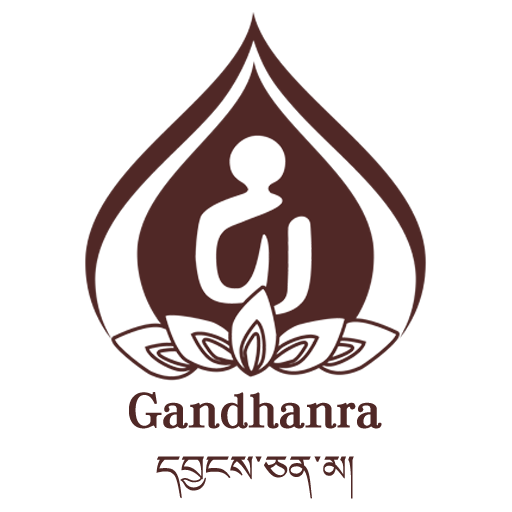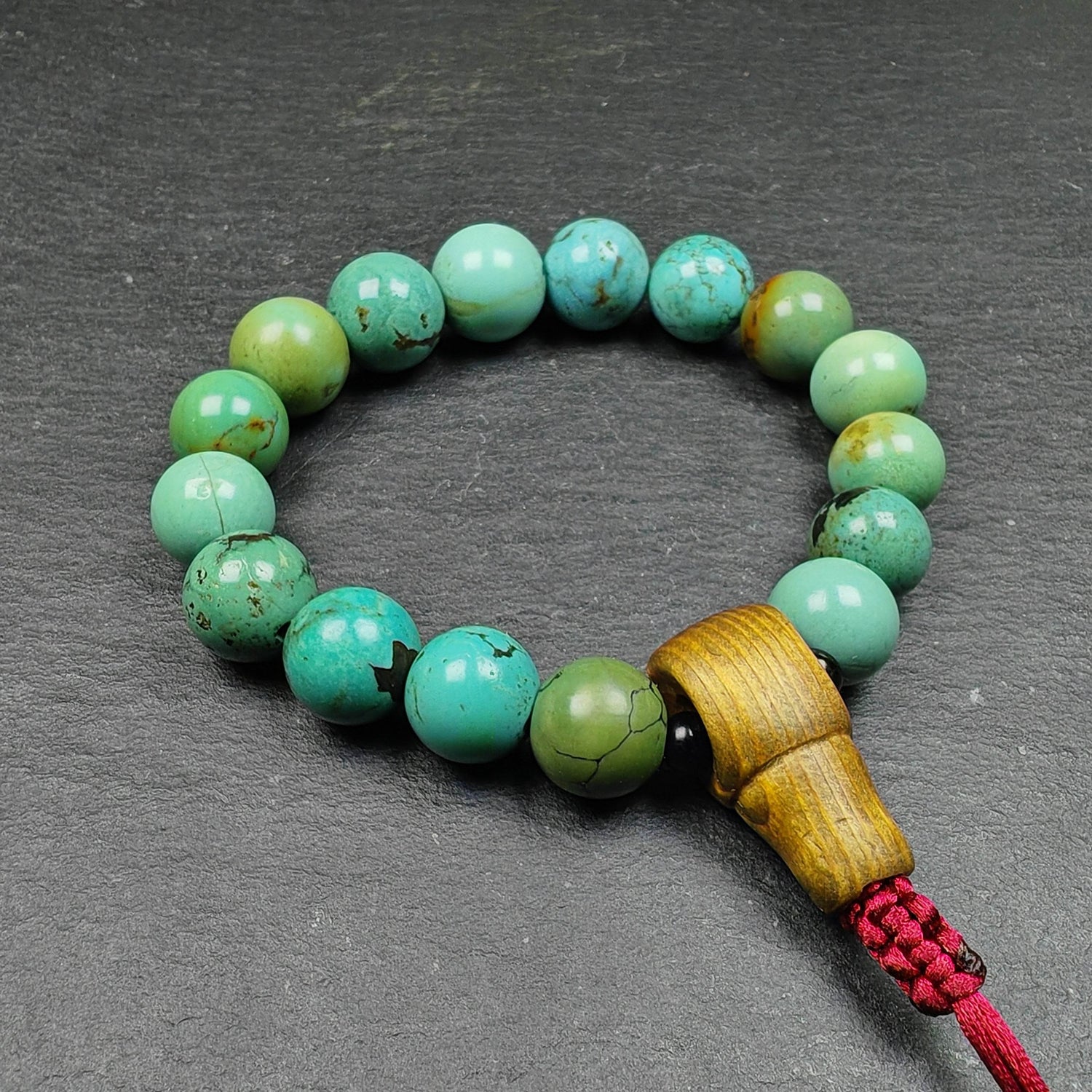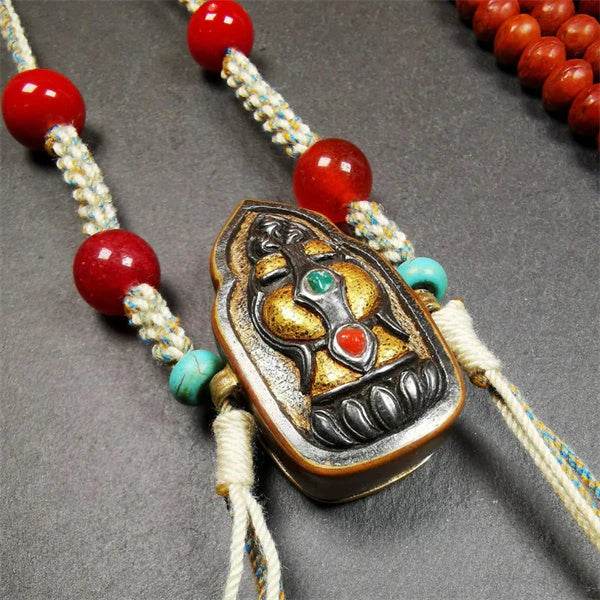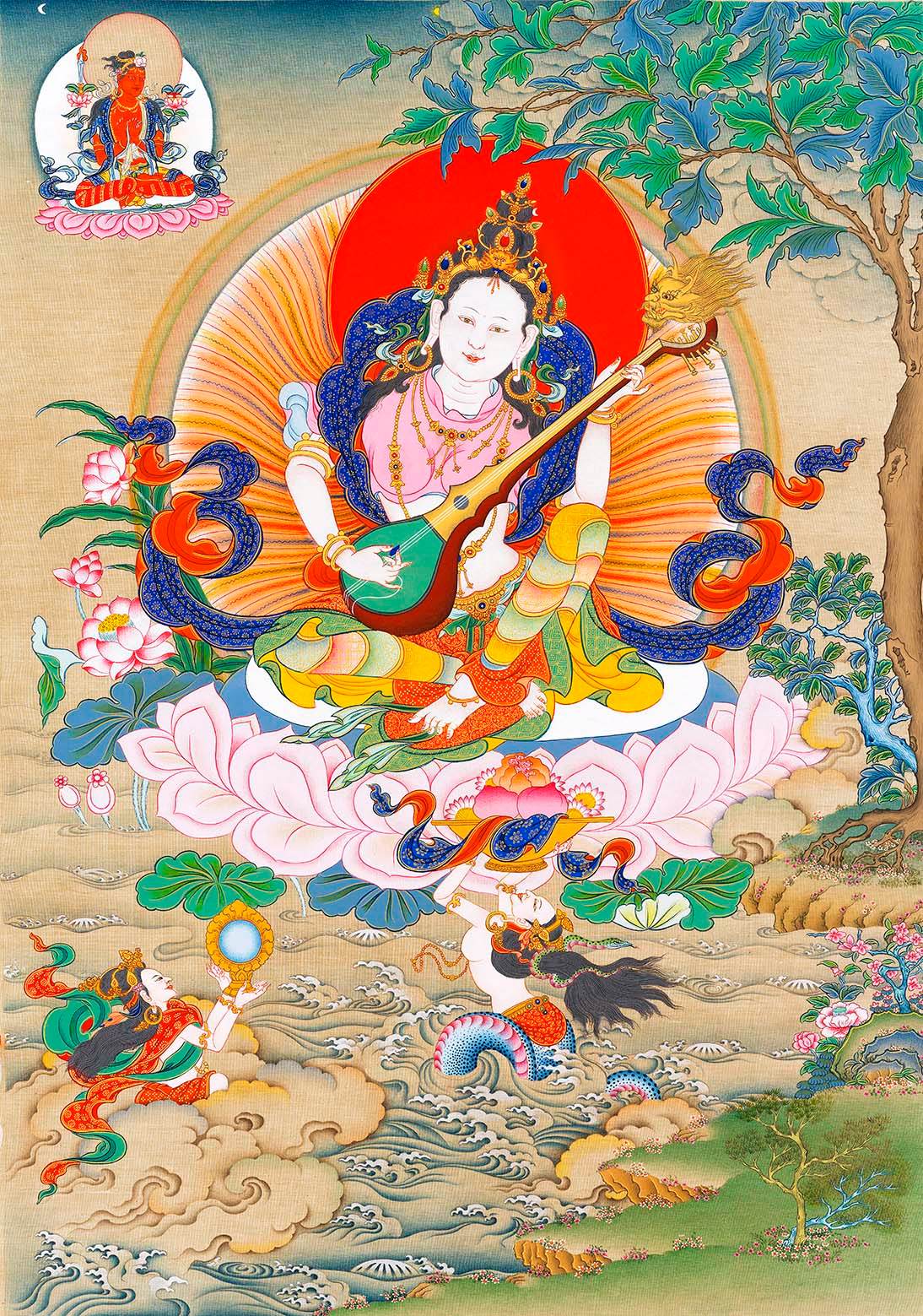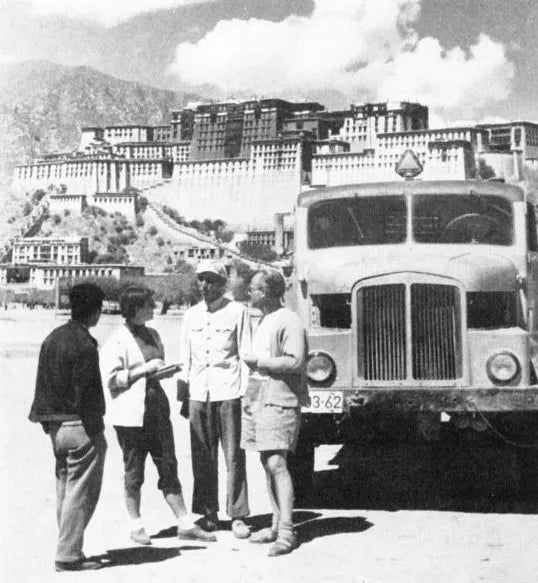
German Woman Photographer Who Married into China ▎ Rare Vintage Tibet Images

Lhasa Girl (Image Source: Tibet)

Nagchu Elderly Woman (Image Source: Tibet)

Dressed-up Shigatse Woman (Image Source: *Tibet*)

Mother and Child (Image Source: *Tibet*)

Weaver Wearing Golden Earrings (Image Source: *Tibet*)

Water-Carrying Monk at Tashilhunpo Monastery (Image Source: Tibet)

Elderly Man from Nagchu Holding a Prayer Wheel (Image Source: *Tibet*)
From Eva to Yehua
Eva Sandberg was born in Breslau, Germany in 1911 and graduated from the Munich Film School in Germany in 1930. In the 1930s, she was influenced by leftist ideologies in Sweden. In 1934, Eva met Xiao San, a member of the Chinese Left-Wing Writers' Union stationed in the Soviet Union. She obtained Soviet citizenship in 1935 and married Xiao San the same year. In 1940, Eva followed her husband to Yan'an, China, where she was given the Chinese name "Yehua."

Yehua and her husband Xiao San (Image Source: China News Network)
In the 1950s, Yehua worked as a photojournalist for Xinhua News Agency and as a correspondent for East German television in Beijing. She obtained citizenship of the People's Republic of China in 1964. During her time working in China, she published photo books introducing Chinese culture both domestically and internationally, including *China, My Dream My Love ~ China Through Yehua's Eyes*, *Peking Opera*, *Family*, *Tibet*, *Little Devils*, *China and Her Faces*, and more.

Yehua in Tibet Image Source: peace
In 1956, Yehua and her friends began their photographic documentation of Tibet. Their journey started in the Amdo region of Qinghai, heading south across vast grasslands to the Ü-Tsang valley. They conducted extensive interviews in three towns—Lhasa, Shigatse, and Gyantse—which became the most substantial section of Yehua’s photo collection. Finally, they reached Yadong, a key commercial town in the Himalayas. In 1957, sponsored by East Germany’s cultural department, the collection was officially published in Leipzig under the title *Tibet*.

Yehua and Friends in Lhasa (Image Source: *Tibet*)
In the 1950s, completing such an expansive journey of interviews and photography was undeniably arduous. Yet through Yehua’s lens, serene smiles and devout eyes brought the faces of Tibet to vivid life. Even as a portraitist, she spared no film when capturing Tibet’s breathtaking landscapes and architectural wonders...

Red Hill and Chagpori in Lhasa (Image Source: *Tibet*)
Journey to Tibet
Yehua's journey began at Kumbum Monastery (སྐུ་འབུམ་བྱམས་པ་གླིང་།), where an ancient tree caught her attention. Legend says this tree grew from the spot where Tsongkhapa's umbilical cord blood fell after his birth. Its leaves—each naturally bearing an image of Shakyamuni—numbered a hundred thousand, giving the monastery its name "Kumbum" (སྐུ་འབུམ།, meaning "100,000 Buddha Images").

Monks of Kumbum Monastery (Image Source: *Tibet*)
After leaving Xining, Yehua traveled south along the Qinghai-Tibet Highway. At the Tanggula Pass, 5,400 meters above sea level, she saw the vast Tibetan landscape for the first time.

Tanggula Pass (Image Source: *Tibet*)
Although modern trucks had begun appearing on the Qinghai-Tibet Highway, traditional yak caravans still played their role, led by herders carrying flintlock rifles.

Yak Caravan (Image Source: *Tibet*)

Herders Carrying Flintlock Rifles (Image Source: Tibet)
Sacred City - Potala
After leaving the pastoral area, Yehua entered the Lhasa River Valley. The Lhasa River (ལྷ་སའི་སྐྱིད་ཆུ།) pointed the way to the sacred city. The valley opened onto a fertile plateau dotted with villages, small monasteries, aristocratic manors, tenant farmers' huts, and shepherds' tents.

Farm in the Suburbs of Lhasa (Image source: Tibet)
Finally, Yehua saw two distinct mountains emerge from the valley—the landmarks of Lhasa: the Medical College (འགྲོ་ཕན་གླིང་།) on Chagpori Hill and the Potala Palace (ཕོ་བྲང་དམར་པོ།) on Red Hill. At that time, Lhasa was home to over 50,000 residents.

Lhasa River Valley (Image source: *Tibet*)

The Yaowangshan Li Zhong Medical College in Tibet.

Potala Palace (Image Source: "Tibet")
The Lulubridge (གཡུ་ཐོག་ཟམ་པ།) is a glass-topped stone bridge, traditionally serving as the boundary bridge between the Lhasa City and the Potala Palace. At that time, the western area of the bridge was managed by the Potala Palace Snow City Management Office, while the eastern area was under the jurisdiction of the Lhasa Municipal Hall.

Landmark building in Lhasa: Lulang Bridge (Source: "Tibet")
Founded in 1416, Tashilhunpo Monastery(དཔལ་ལྡན་འབྲས་སྤུངས།) is the largest Buddhist monastery in the world and one of the six major monasteries of the Gelugpa sect. It was established by the renowned Buddhist scholar Jamyang Qoigyi Gyeltsen Palsangpo(འཇམ་དབྱངས་ཆོས་རྗེ་བཀྲ་ཤིས་དཔལ་ལྡན།) and has been standing for over six centuries.

Tashilhunpo Monastery (Image source: "Tibet")

Monks sorting through scriptures in Tashi Lhunpo Monastery (Image source: "Tibet")
Shigatse - The Summit of All Desires
After leaving Lhasa, Ye Hua began his journey westward and crossed the Yarlung Tsangpo River to reach the second largest city in Tibet, Shigatse, which means "fulfillment of all wishes" (གཞིས་ཀ་བསམ་འགྲུབ་རྩེ།)in Tibetan.

The Zhashilunbu Monastery in Shigatse, Tibet (Image source: "Tibet")
As Ye Hua strolled through the streets of Lhasa, she marveled at the variety of goods originating from South Asia and mainland China. With the development of trade routes between Sikkim and Tibet, products such as toothpaste, shoes, skincare products, fabrics, cameras, leather saddles, sunglasses, and writing paper were no longer scarce. These merchants also offered daily consumables such as tsampa, dried fruits, candies, butter, and buttermilk, and one could even find canned condensed milk and juniper wine. Rice wine from Jiangsu, Zhejiang, Hunan, and Hubei also made an appearance in the market, making it a place where "all wishes come true."

The Buddha statues in Zashilunbu Monastery (Image source: "Tibet")
Jiangzi - City of Crystal
From Lhasa to the south along the ancient Musk Route, you will reach the Gyantse Ancient City. The Nyang River Valley between Gyantse and Lhasa is one of the largest farming areas in Tibet. Gyantse is also known as the Crystal City (ཤེལ་དཀར་རྒྱལ་རྩེ།), serving as a trading hub connecting Lhasa, Shigatse, and South Asia.
 Jiangzi City and Zongshan (Image source: "Tibet")
Jiangzi City and Zongshan (Image source: "Tibet")

Gyantse Street Scene (Image Source: Tibet)

Making Tibetan Carpets (Image Source: *Tibet*)

Porter (Image Source: *Tibet*)
Heading south from Gyantse along the trade route leads to the famous town of Phari, dominated by the landmark Mount Chomolhari (ཇོ་མོ་ལྷ་རི།) to its east. Since the 19th century, countless explorers passing through Sikkim into Tibet have recorded her majestic silhouette in their journals. Sarat Chandra Das and Giuseppe Tucci entered Ü-Tsang under her gaze, while Francis Younghusband’s expedition rested here. Yet despite witnessing these historic moments, the towering Chomolhari and the leisurely grazing yaks below seem untouched, as if time stands still.

Mount Chomolhari in Phari (Image Source: *Tibet*)

Yaks in Phari (Image Source: *Tibet*)
Yadong - Trading Town
Yadong, the southernmost point of Tsang, is nourished by warm, moist air currents from South Asia. This trading town was among the first in Tibet to encounter modern civilization. Monks rarely appear in its streets, though some monasteries hide in the mountain forests nearby.

Trade Road from Yadong to Sikkim (Image Source: *Tibet*)
Yadong’s landscape reminded Yehua of her Alpine homeland in Europe. The rooftops here, designed to withstand rain and snow, so closely resembled those of Bavaria that only the plainly dressed locals and prayer flags made her realize she was still in Tibet...

Yadong (Image Source: *Tibet*)

Yadong Valley (Image Source: Tibet)

Architecture in Yadong (Image Source: *Tibet*)
Seasons Blended Through the Lens

Lhasa Riverbank (Image Source: *Tibet*)

Washing Clothes (Image Source: *Tibet*)

Forest Classroom (Image Source: *Tibet*)

Eva Siao (Yehua)
Photographer
Chinese-German, born in Breslau, Germany in 1911. In 1930, Yehua graduated from the Munich Film School in Germany. During the 1950s, she worked as a photojournalist for Xinhua News Agency and as a correspondent for East German television in Beijing. She obtained citizenship of the People’s Republic of China in 1964. While working in China, she published photo books introducing Chinese culture both domestically and internationally, including *China, My Dream My Love ~ China Through Yehua’s Eyes*, *Peking Opera*, *Family*, *Tibet*, *Little Devils*, *China and Her Faces*, and more. She also held solo photography exhibitions in China, Germany, Sweden, and other countries.
